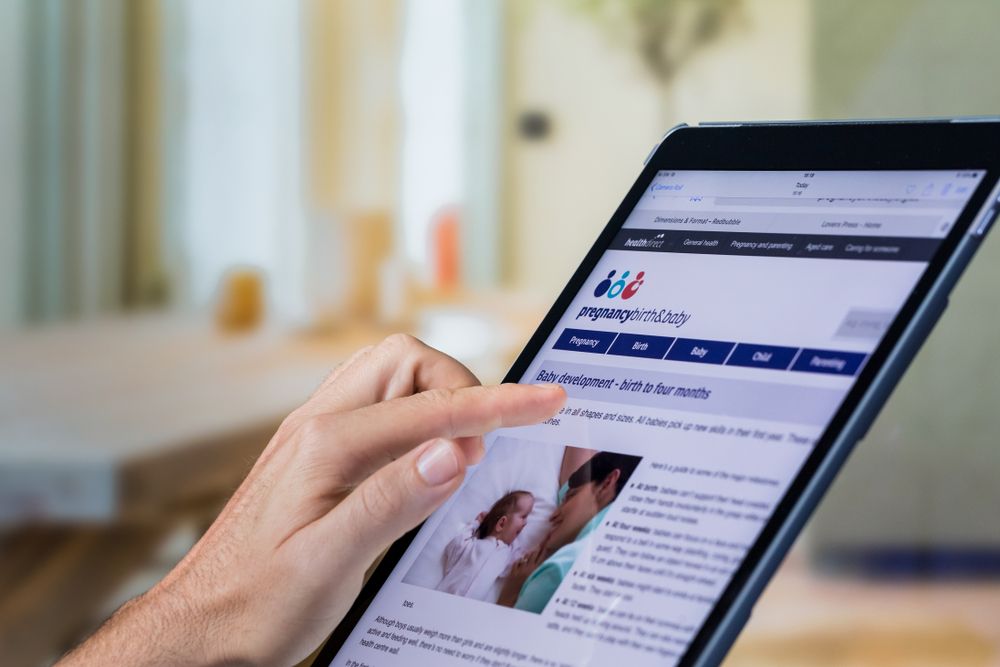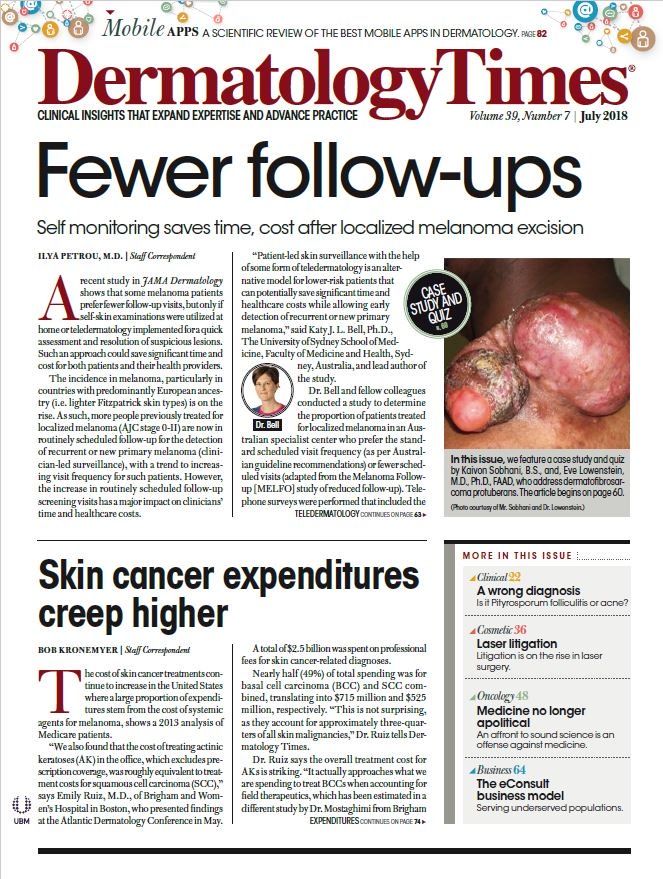- Case-Based Roundtable
- General Dermatology
- Eczema
- Chronic Hand Eczema
- Alopecia
- Aesthetics
- Vitiligo
- COVID-19
- Actinic Keratosis
- Precision Medicine and Biologics
- Rare Disease
- Wound Care
- Rosacea
- Psoriasis
- Psoriatic Arthritis
- Atopic Dermatitis
- Melasma
- NP and PA
- Skin Cancer
- Hidradenitis Suppurativa
- Drug Watch
- Pigmentary Disorders
- Acne
- Pediatric Dermatology
- Practice Management
- Prurigo Nodularis
- Buy-and-Bill
Publication
Article
Dermatology Times
More patients want digital health
Author(s):
The AMA’s chief information officer talks digital health technology with Dermatology Times.
(©SunshineSeeds/Shutterstock.com)

The future of healthcare technology was center stage in Las Vegas this spring at the HLTH Future of Healthcare conference that attracted payors, policy makers and innovators seeking technological advances in healthcare.
The meeting included a session on the future of digital health with a presentation by Michael L. Hodgkins, M.D., chief medical officer for the American Medical Association.
Although the industry may still be in its infancy, digital health tools are in practice today. Among the more common technology solutions include online patient portals, secure text messaging, telemedicine, mobile clinical decision support services and online provider communities.
But as with any new technology, there are startup challenges and in medicine, that challenge centers on trust and malpractice fears. Some providers and patients are reluctant to take the plunge for fear that these tools are not secure, Dr. Hodgkins said.
“Aside from medical malpractice, there’s the concern about privacy and security. As the physician, you are held accountable for breaches of patient information under HIPAA. Your patients’ trust depends on the security and privacy of their data being preserved,” he said.
Dermatologists and dermatology patients are especially interested in exploring the benefits of digital health technology âafter all, the specialty is visual-centric. This interest has been documented in telemedicine surveys and studies, including a March 14 study published in the Journal of Dermatological Treatment showing that 90.80% of 841 surveyed patients would schedule appointments online, but the interest dropped from there:
• 84.41% would complete online patient registrations
• 76.56% prefer electronically-placed prescriptions
• 76.34% would use digital healthcare services for medical consults
• 65.37% of patients would personally cover the cost of an online consult
• 42.03% would view online learning videos
• 40.89% would send photos of skin changes by email to their doctor
• 40.61% would send photos of skin changes by mobile apps to their doctor
• 34.53% would agree to an online consultation
“I think physicians are rightfully concerned about the use of digital medicine and whether it’s actually going to deliver more efficient and better care, or if it’s just going to add to the frustration” Dr. Hodgkins said.
IN A MORE PERFECT DIGITAL WORLD
Imperfections aside, the march toward increasing use of digital health tools is going forward, he said.
“Let’s say you have a patient with a chronic skin condition, like psoriasis, do you have to see them in the clinic as frequently? Possibly not. If you could get needed information in an immediate way from a patient without the patient having to come to the clinic, and if it wasn’t going to negatively impact your clinic revenue, why wouldn’t you use one of these tools?” Dr. Hodgkins asked.
Triaging patients with skin lesions is another promising area for digital health apps in dermatology. Patients could send dermatologists high-definition images of lesions they’re concerned about. The dermatologist could take a look, first, to decide whether the patient needs to come in for a visit and then whether findings could be discussed via a virtual tool, such as video conferencing.
PHYSICIAN-DRIVEN INNOVATION
Dr. Hodgkins serves as chair of Xcertia, an independent nonprofit collaboration with the Consumer Technology Association that is focused on strengthening guidelines and standards for digital health tools. The group published its first set of guidelines in 2017, and they are due to be updated this year.
But one set of guidelines will not suffice. Provider specialty organizations, such as the American Academy of Dermatology, should also include the use of digital health tools in clinical guidelines they publish, he said.
“The Xcertia guidelines would be a good starting point for specialty societies as they evaluate which of these digital medicine tools they might want to recommend as part of clinical guidelines they may develop,” Dr. Hodgkins said.
Digital health tools are better when physicians contribute to the development process.
The “Physician Innovation Network,” a website of the AMA, is designed to connect physicians and technology developers. This is where developers with a new idea can get physician input on new healthcare technologies and physicians can approach technology experts with ideas of their own.
A dermatologist who has done precisely that is Dhaval Bhanusali, M.D., who practices dermatology in New York, N.Y., and Miami, Fla.
“When I was young in my career, I saw a lot of inefficiencies in healthcare that tech could solve. Now, my dream is to inspire physician-driven innovation,” he said.
When Dr. Bhanusali was a resident, he created a tele-dermatology platform that addressed access issues for nursing home patients by triaging patients.
Today, he is founder and CEO of the healthcare technology company Health Digital. The company is currently developing a digital platform for prescribing medications. And, they are currently designing technologies designed to make clinical trials more accessible to patients.
“Times are changing. My belief is that as we evolve as a field, there will be a lot of new technologies. As dermatologists, the best thing we can do is to stay in front of it â as opposed to being reactive. When you’re reactive, you have to adapt to someone else’s terms. But if you’re creating technology and implementing it, you’re creating a niche that can support your practice,” Dr. Bhanusali said.
“We’re seeing disruption in a lot of different industries. I think dermatology is going to be targeted for specific conditions, such as acne. So, I hope my colleagues will be proactive,” he said.
REFERENCES
Mault J, Rhew D, Hodgkins ML, Fisher N, “Advancing the State of Digital Health.” HLTH conference. Las Vegas. May 6-9, 2018. https://hlth.co/
Greis C, Meier Zürcher C, Djamei V, et al. "Unmet digital health service needs in dermatology patients." The Journal of Dermatological Treatment. Published online ahead of print March 2018. DOI:10.1080/09546634.2018.1441488







